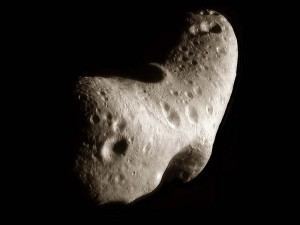Discovery date 27 June 1949 Observation arc 65.98 yr (24099 days) Asteroid group Asteroid belt | Alternative names 1949 MA Discovered 27 June 1949 | |
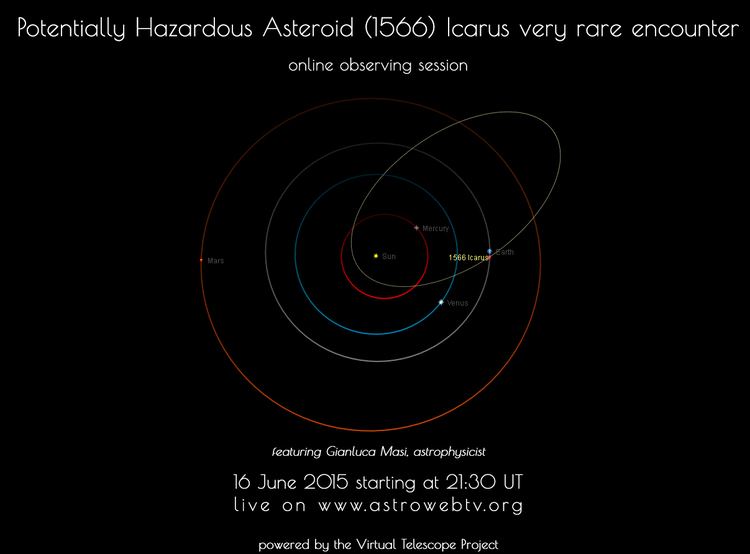 | ||
Discovered by Walter BaadePalomar Observatory Minor planet category Aphelion 1.96951 AU (294.635 Gm) Similar Sun, Solar System, 1862 Apollo, Asteroid belt, (33342) 1998 WT24 | ||
1566 Icarus (/ˈɪkərəs/ IK-ə-rəs) is an Apollo asteroid (a subclass of near-Earth asteroid) that at perihelion comes closer to the Sun than Mercury, i.e. it is a Mercury-crossing asteroid. It is also a Venus and Mars-crosser. It is named after Icarus of Greek mythology, who flew too close to the Sun. It was discovered on 27 June 1949 by Walter Baade at Palomar Observatory. From 1949 until the discovery of 3200 Phaethon in 1983, it was known as the asteroid that passed closest to the Sun.
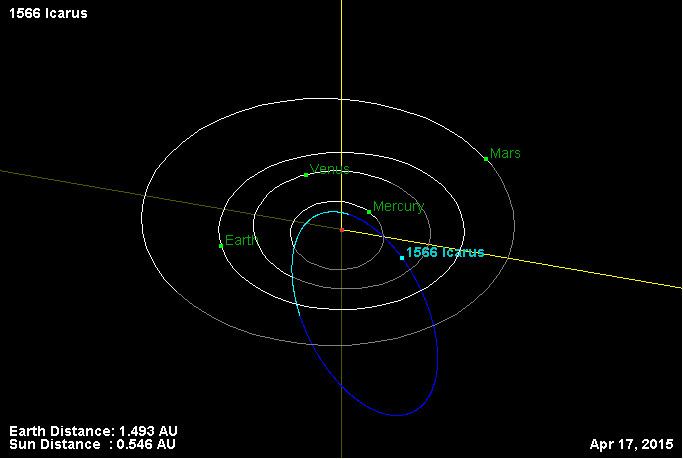
Icarus is the lowest numbered potentially hazardous asteroid (PHA). Icarus makes close approaches to Earth in June at intervals of 9, 19, or 28 years. Rarely, it comes as close as 0.042482 AU (6,355,200 km; 3,948,900 mi) (16 lunar distances), as it did on 14 June 1968. During this approach, Icarus became the first minor planet to be observed using radar, with measurements obtained at the Haystack Observatory and the Goldstone Tracking Station. As of 2015, the last close approach was on 16 June 2015, at 0.05383 AU (8,053,000 km; 5,004,000 mi). Before that, the previous close approach was on 11 June 1996, at 0.10119 AU (15,138,000 km; 9,406,000 mi), almost 40 times as far as the Moon. The next notably close approach will be on 13 June 2043, at 0.0586 AU (8,770,000 km; 5,450,000 mi) from Earth.

1566 Icarus is being studied to better understand general relativity, solar oblateness, and Yarkovsky drift. Perihelion precession, caused by general relativity, in the case of Icarus is 10.05 arcseconds per Julian century.

Project Icarus
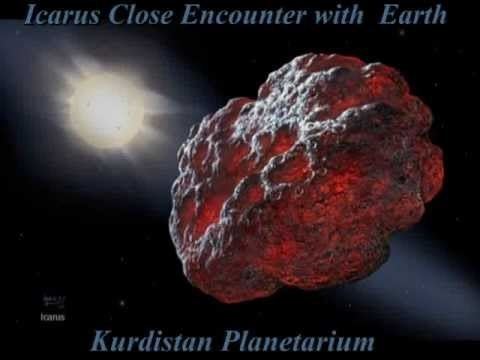
"Project Icarus" was conducted in the spring of 1967. It was an assignment by Professor Paul Sandorff for his group of Massachusetts Institute of Technology graduate students in a systems engineering class to design a way to deflect or destroy 1566 Icarus in the case that it was found to be on a collision course with planet Earth, using rockets. Time magazine ran an article on the endeavor in June 1967 and the following year the student report was published as a book.
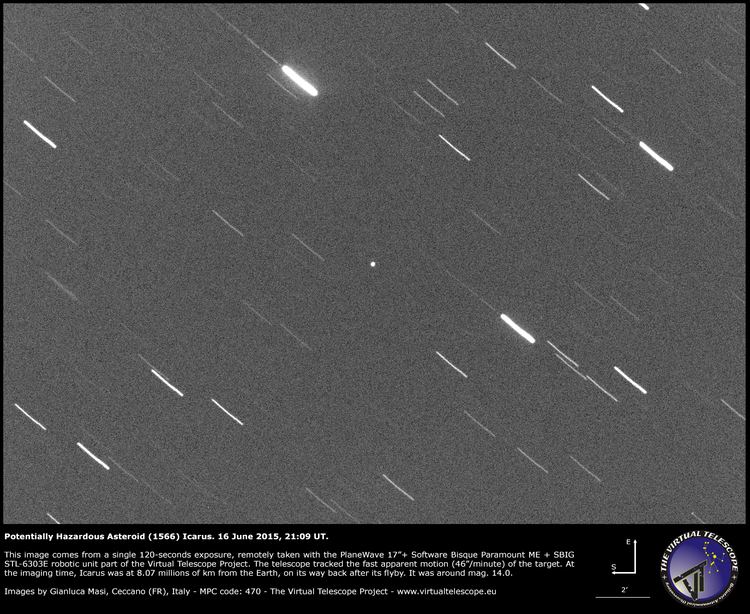
In the course of their study the students visited the Kennedy Space Center, Florida, where they were so impressed with the Vertical Assembly Building that they wrote of "the awesome reality" that had "completely erased" their doubts over using the technology associated with the Apollo program and Saturn rockets.
The report later served as the basis and inspiration for the 1979 science fiction film Meteor.
